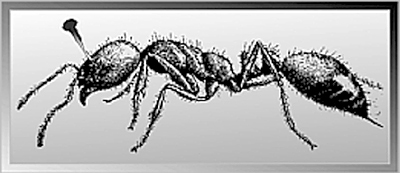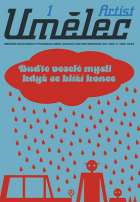| Umělec magazine 1998/1 >> Mickey Mouse, Quagga And Stink Ant | List of all editions. | ||||||||||||
|
|||||||||||||
Mickey Mouse, Quagga And Stink AntUmělec magazine 1998/101.01.1998 Miloš Vojtěchovský | reviews | en cs |
|||||||||||||
|
If a pet animal keeps nodding its head at you from behind a shop window or if at baker’s you suddenly notice a robot endlessly working plastic dough, you can but wonder about the mysteries and curves of business creativity and tricky attack on children’s imagination. An exhibition of moving and howling dinosaurs - robots in real life size that were travelling around amusement parks of Europe is much more perfect and impressive. Walking into a contemporary art gallery these days, you already know about applied technology and are ready for various petty tricks, surprises and jokes prepared by the artists. They sometimes manage to combine the surprising with the functional and funny. At Mark Dion’s exhibition Natural History And Other Fiction, a real Mickey Mouse starts talking to you, sitting behind a desk or balancing on a ladder leaning against a wall under a shelf with characters from Woody Pecker’s series in ethanol. Micky moves his mechanical mouth dilligently while closing his glass eyes and talking about taxonomy of so-called un-endangered species whose specimens are in the glasses above him.
An artistic persiflage of a serious problem concerning extinct animal species appears to be a bit ackwardly grotesque at first. Upon a closer look at other installations and texts in the catalogue entitled An Illustrated History of the Wonderful And Curious Things of Nature Existing Before And After the Deluge, however, Dion shows remarkable consistency and his “tong-in-cheek method“ takes on a deeper meaning. Mark Dion (1961) chose the ironic image of a scientist- biologist as a semantic masque for his own work at the end of the 80‘s when his colleagues were busy with a type of a stock exchange speculator, a messiah and a deviated person. In addition to a number of exhibitions including Venice and Münster, Dion wrote and compiled several natural science books, balancing on the border between real science, an art project and irony. In 1990, he introduced his Mickey Cuvier, a cross between the Disney character and 19th century paleonthologist Georges Cuvier, for the first time. While Cuvier was intensely studying the problems of evolution and extinction of certain prehistoric species, Micky Mouse represents a prototype of new animal forms - virtual mutants created by people to replace real animals. While preparing an installation On Tropical Nature, Dion spent time in a rain forrest in Venezuela, collecting animal species and plants to sent them to the museum. A scientist kills in the name of knowledge. Animals and plants unfortunately have to be killed so that they may be described and exhibited in an artificial environment - a laboratory, a museum or a gallery. Alfred Russel’s Delirium is a theater-like set up with a biologist-collector in nature suggested by two trees, a net between them and equipment necessary for preparing animals. Instead of a biologist, the net covers a stuffed fox babbling a monologue of a traveller in a tropical forrest suffering from malaria. In a special project for De Appel Gallery in Amsterdam, Dion loaned a stuffed quagga, an extinct zebra whose last piece died in Amsterdam Zoo in 1883. Perfectly stuffed Dead Animal is placed into an airconditioned box representing the uniqueness of the last piece of its species and a parallel to conserved Art Work.
01.01.1998
Recommended articles
|
|||||||||||||










Comments
There are currently no comments.Add new comment